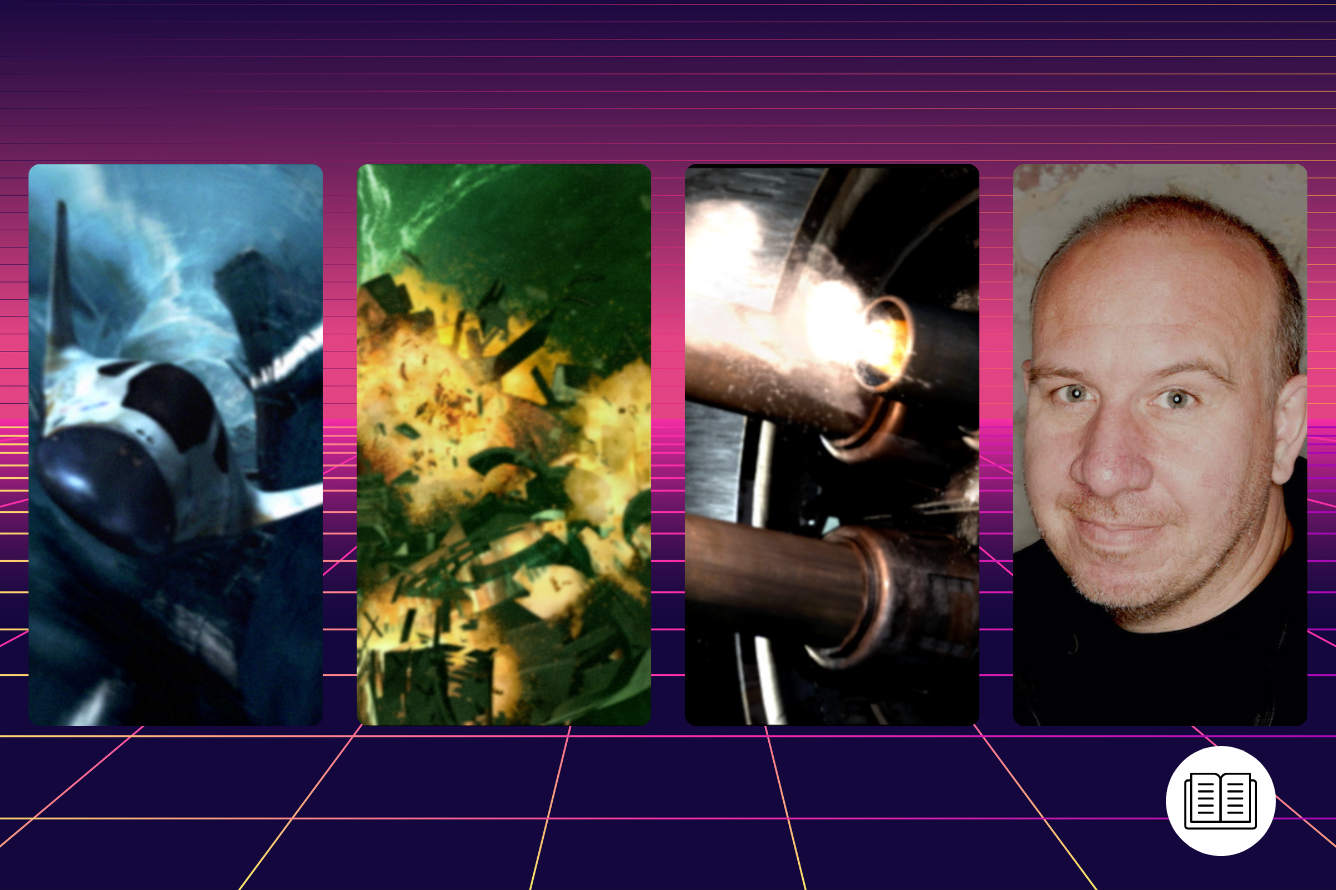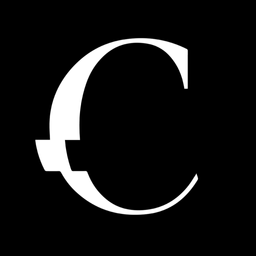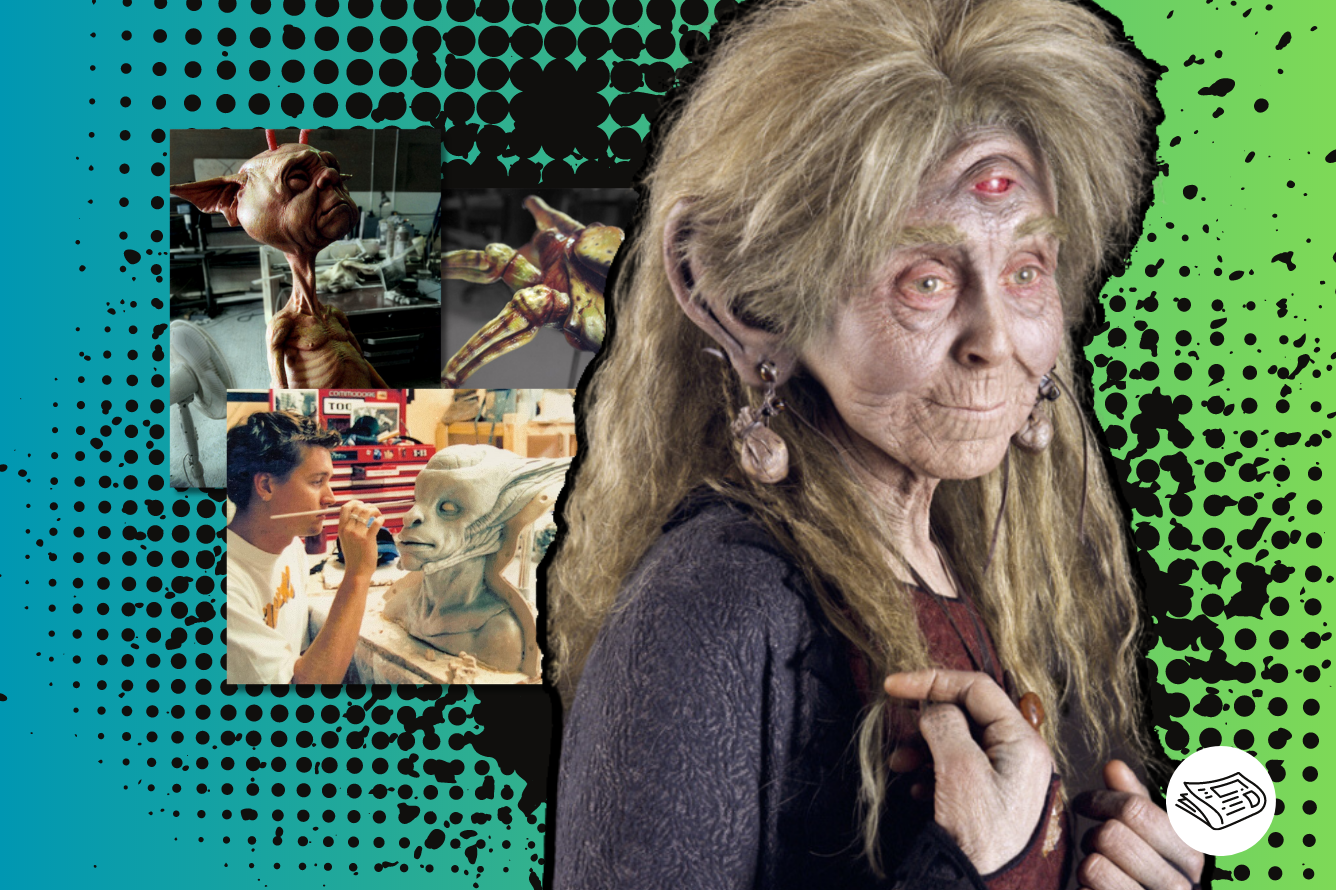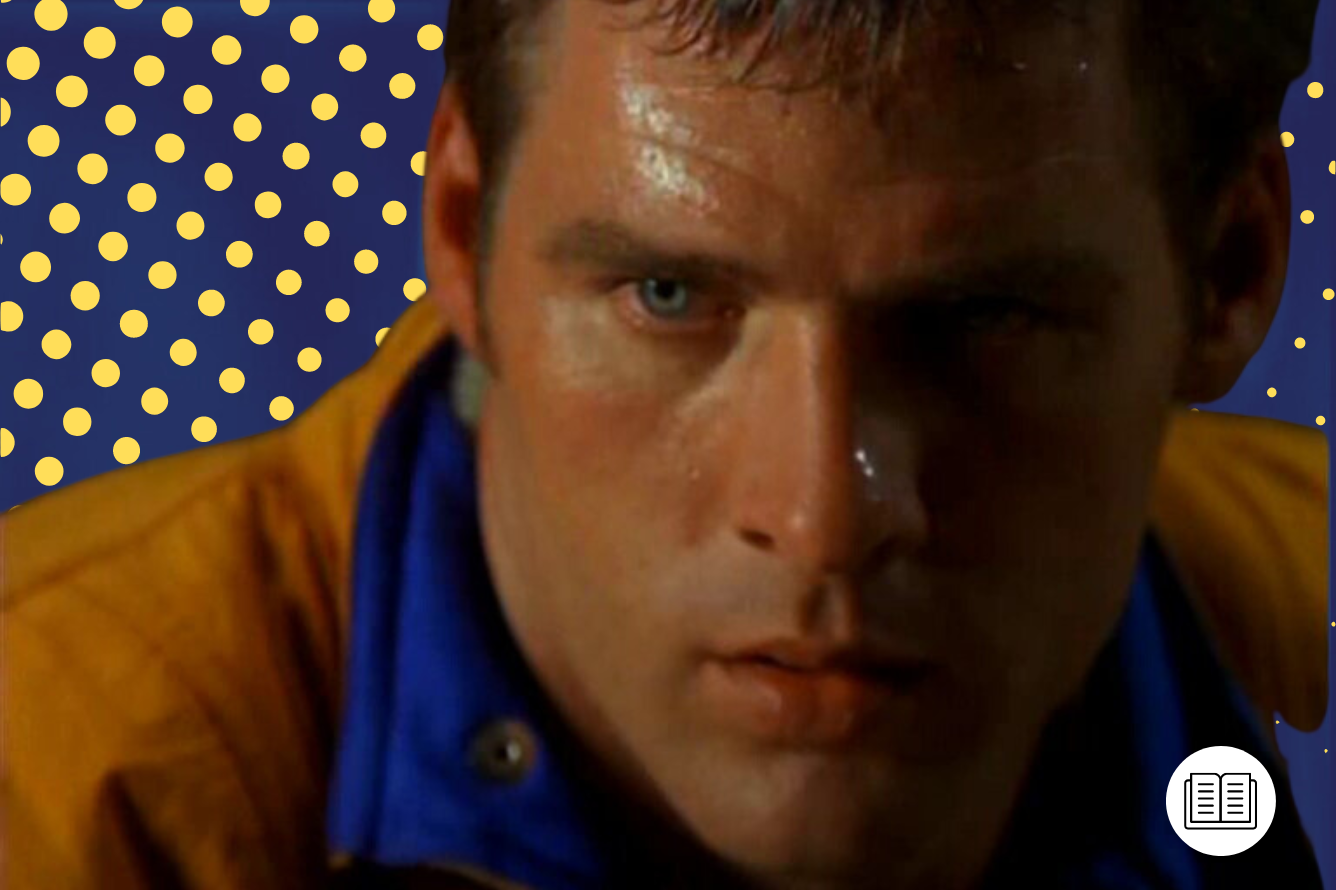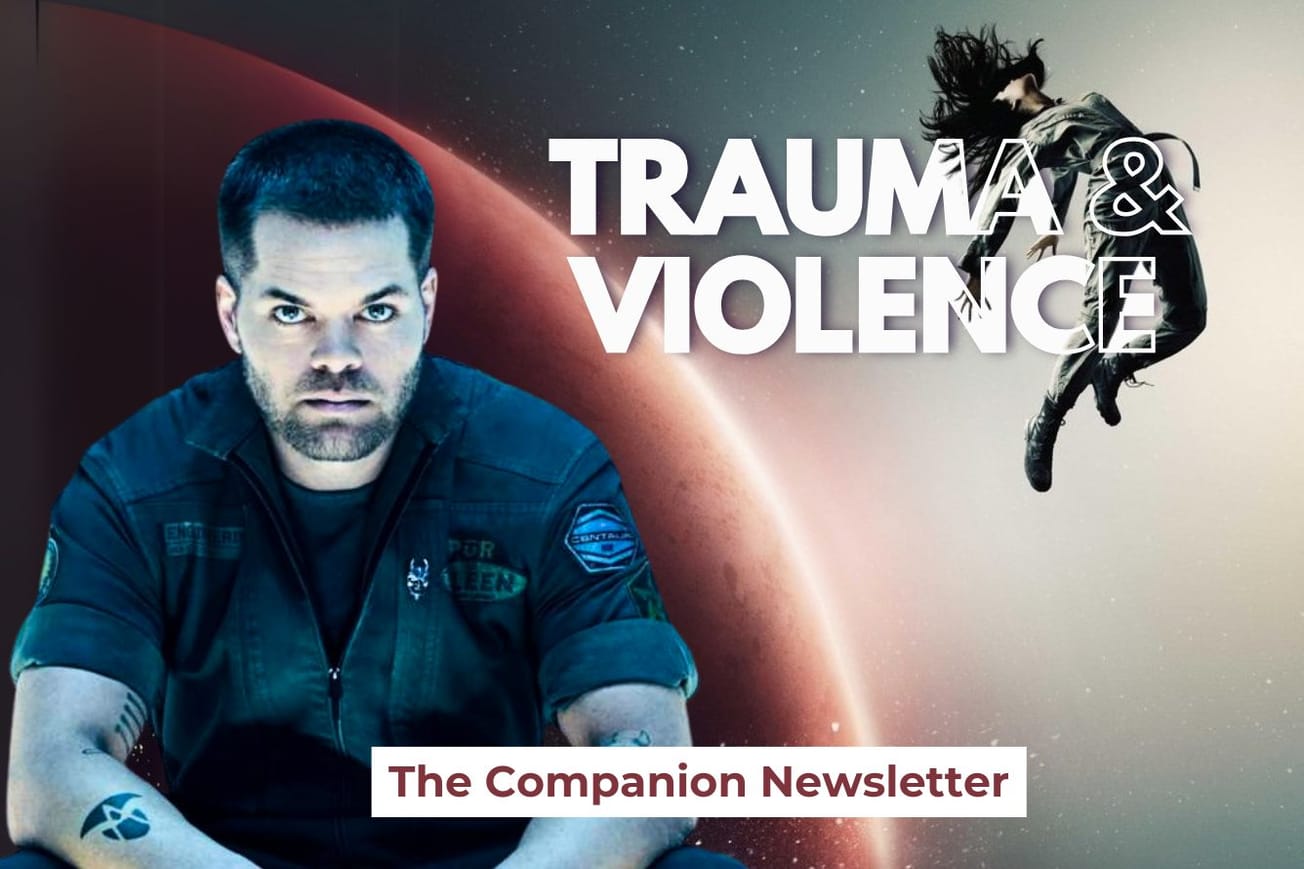At the time of speaking to Paul Butterworth over Zoom in the depths of the Covid pandemic, he was deep into production on Australian auteur George Miller’s fantasy romance Three Thousand Years of Longing (2022) with a cast of Idris Elba’s face on his desk. Now at the time of writing, the British-born Australian resident is working on George Miller’s next movie, Furiosa, his no-doubt bonkers prequel to the frantic Mad Max: Fury Road (2015) (2015).
Butterworth’s journey has included founding Fuel VFX and working on such effects-driven science fiction spectacles as Captain Marvel (2019), Guardians of the Galaxy Vol. 2 (2017), Alien: Covenant (2017), Captain America: Civil War (2016), and Prometheus (2012). This whole industry built up in support of not just Australia’s domestic output, but big-budget Hollywood projects isn’t entirely down to Farscape but certainly that generation of behind-the-scenes talent laid the foundations.
Farscape was the brainchild of Alien Nation and SeaQuest DSV screenwriter Rockne S. O’Bannon and The Jim Henson Company’s Brian Henson. In grappling with the challenges of how to make their wild and wonderful small-screen space opera look big-screen spectacular on a small-screen budget, their heads were turned by the tax breaks and burgeoning industry eco-system offered by the Australian state of New South Wales.
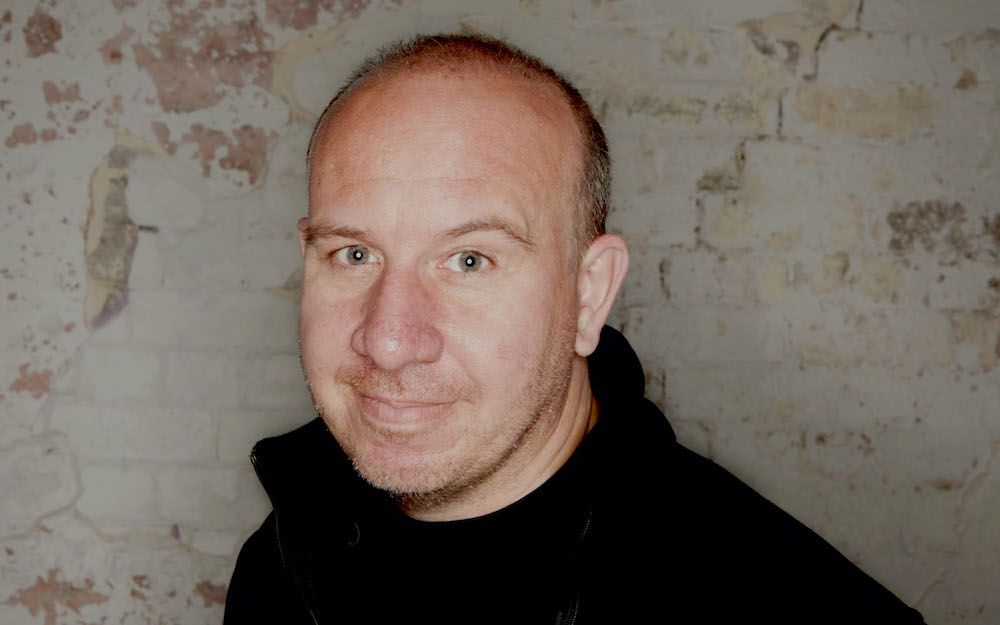
Farscape’s Australian fixer Matt Carroll – who like George Miller, was a legend of the Australian New Wave as producer of movies like Sunday Too Far Away (1975), Storm Boy (1977), and the Academy Award-nominated period drama Breaker Morant (1980) - was tasked with setting up the production Sydney-side.
“It was a very bizarre, very bizarre project,” recalls Butterworth. “It was 97/98 when I came on, right at the start because I did that first season. I was the VFX supervisor for the entire first season even though I think I only got credited for, like, four episodes.
“I was there at the beginning with Rockne S. O’Bannon and Brian Henson, they came out to Australia and they had no idea of the kind of scale of the show they wanted, they had an Episode 1, which was obviously the pilot, and then we had Episode 3. That was it. That was all the scripts they had.”
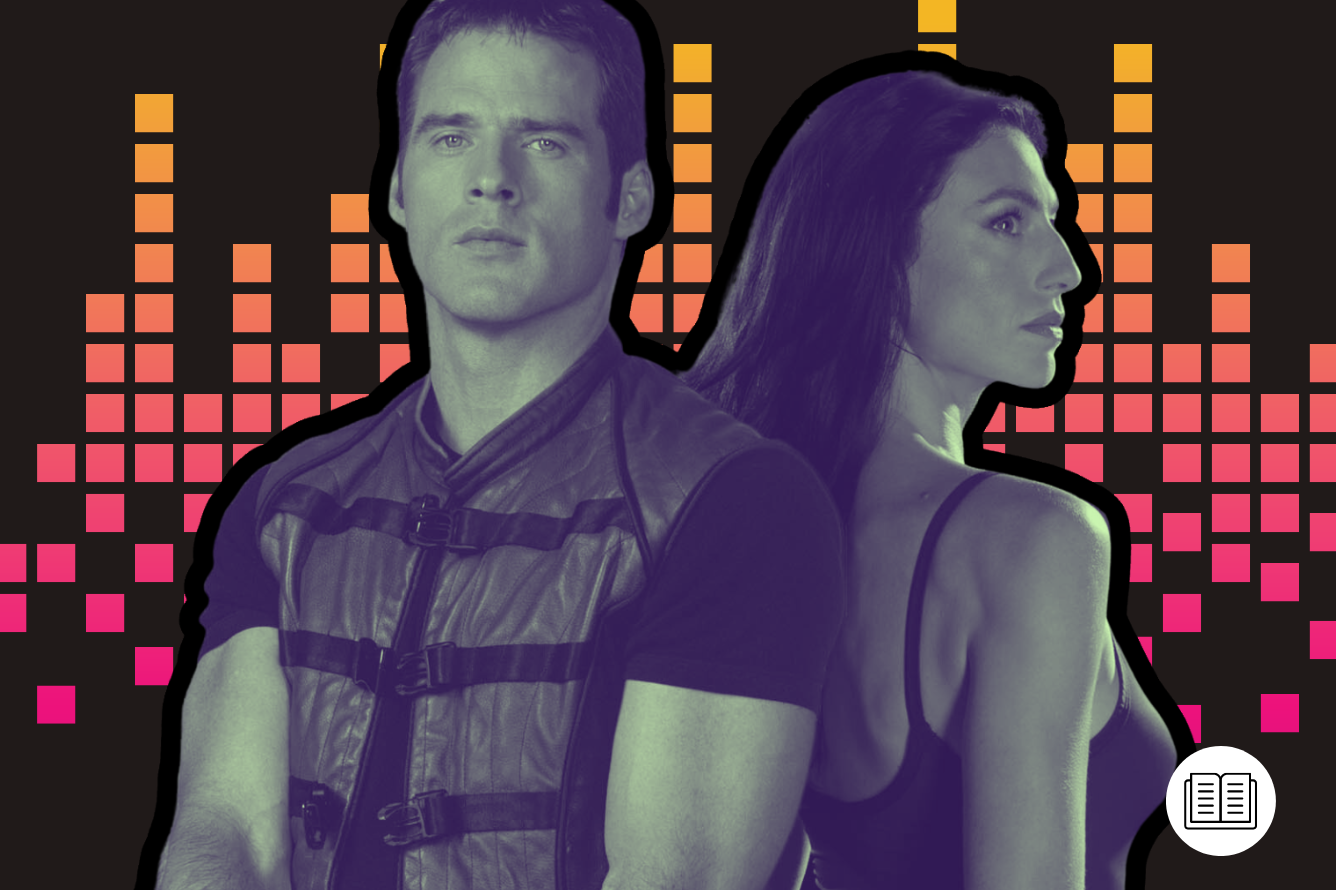
Becoming Involved in Farscape
In the late 90s, the idea of a dedicated visual effects company in the Industrial Light & Magic model was just completely outside the Australian frame of reference. The closest thing was post(-production) houses, which dealt with every aspect of post-production for commercials and television: editing, compositing CGI and other visual effects, sound design, color correction, captioning and subtitling, and so on. Animal Logic had just rebranded and pivoted to film, and had just started what would become Oscar-winning work on The Matrix (1999), then in production at the newly minted Fox Studios lot in Sydney.
Butterworth didn’t anticipate his career following a similar trajectory.
“I was directing commercials, and then I got a call saying, ‘Hey, do you want to have a look at this show?’ At the time there wasn’t even a title for VFX supervisor – it was just the guy that talked to directors and talked to post houses. ‘Come and look at this comic book television show, I would like you to work on.’
“I was doing really well in commercials, so the last thing I wanted to do was work on this weird kids’ show. And it was really pitched that way – ‘It’s a kids’ show.’ So I went ‘Nah, nah.’ A couple of weeks went by, and then I got another call from another company going, ‘Hey, we'd like you to come and help us pitch in this show that that's floating around and it would be really cool if you could be involved because I think you'd be the right person for the job.’ I went ‘Nah, I'm really, really busy – I’m solidly booked out,’ so I just dropped it again.
“Literally like six weeks later, I was in one of the post houses which is Garner McLennan Design at the time. And then the owner of that company, who was a really good friend – Jeff Oliver – he said, ‘Look, I've got this script, I really want you to have a look at it.’ I went ‘Is it like this weird kids’ show thing with creatures in it?’ – ‘Yeah, yeah, how do you know about that?’ –” he changes his tone to weary resignation – “‘Give us the script and I’ll have a look at it.’
“And it was really fun. I said ‘What are we doing here?’ – ‘Well we’re going to go in and meet these guys, so if you are going to go in and meet them, you need to do some concept frames.’ Literally over a couple of weeks I painted up a design for Moya and a design for a Prowler, I think it was at the time, just as some really big paintings, huge paintings. It was painted with Photoshop, and I worked very closely with a good CG artist at the time at Garner McLennan Design called Andrew Hellen, and between the two of us we kind of modeled and painted over this thing.
“Then went in as a team to pitch with Hensons and Matt Carroll, and out of that meeting, they said, ‘Yep, you’re in – you're going to do the show.’ We had absolutely no experience of delivering television. We had no pipeline – that wasn’t a thing. No one of the thought of the pipeline and the budget was so small, that we’re basically gonna have to train almost an entire crew from scratch.”
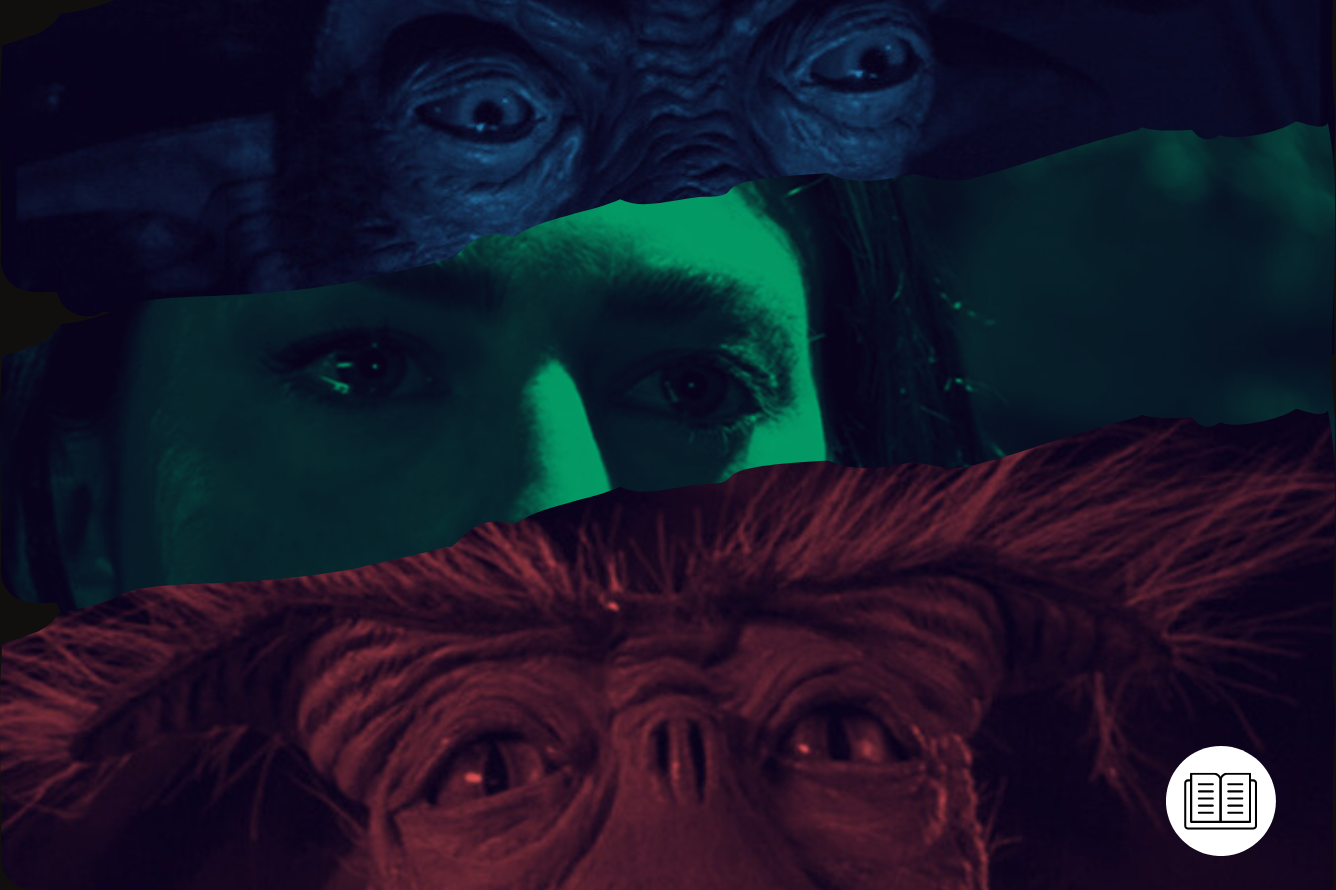
Building a VFX Studio from Scratch
The pipeline refers to the flow of visual effects work from pre-production to post-production. Life begins at script and storyboard and ends at compositing, where the VFX shots, the live-action footage, and other bits of production wizardry are layered and turned into a single piece of film. To say that Garner McLennan Design didn’t have a pipeline is to emphasize the extent to which they were literally – and with the greatest of respect - making it up as they went along.
“We were just naive, and you know, I’d never done that before. I’d obviously done tonnes of commercials and when you’re 27 you’re like ‘Yeah, yeah, of course, I can do this.’ We wanted to push it to the next level. Our comparison at that time I think was Star Trek. Star Trek was doing like 20 [VFX] shots an episode is what they planned for. Babylon 5 was around the time, and that had a really low shot count. We planned for, I think, about 50 VFX shots per episode, which has never been done in television, and [in] the very first episode, I think we did 160-odd shots. I think over the entire first season, we did 75-odd minutes of animation and design – about 1,800 shots.”
The naive ambition of Garner MacLennan Design made waves that were felt across the Tasman Sea in Aotearoa/New Zealand where Peter Jackson’s Weta Digital was staring down the challenge of bringing Middle Earth to life.
“[On] that first season, we were first to build a pipeline locally and Peter Jackson came to see what our pipeline was. We had [the VFX team] from Star Trek come down, because they want to know how we were actually delivering twice as much as they were doing on Star Trek. And we got Emmy nominated at the time for the first season… from an Australian company in the middle of nowhere.
“By the time we’d finished the first season, Lord of the Rings are just starting out and they were then being inspired by where we’d gone with workstations. People with workstations and a whole bunch of people working together wasn’t really approached as a system at the time. In 97/98, you had a Harry system which was a main compositing system, and maybe a small CG department doing commercials. But no one, apart from ILM, was doing this thing where you had 35 people all with little workstations, Windows NT boxes, and using off-the-shelf software, and kind of busting up shots in that way had never really been done before.
“We didn't know we were groundbreaking, it was just how we went about it, you know?”
It’s impossible to overstate the scale of the challenge being faced by Garner MacLennan Design as they tried to do Star Wars from scratch and deliver it weekly using “off-the-shelf” creative software such as Photoshop, After Effects, and the 3D modeling package Alias Wavefront.
“I was a supervisor,” explains Butterworth. “I was matte painting on the show, I was conceptualizing the show, I was working with a storyboard artist to try and work out all of the effects shots, and I'd never done a shot breakdown before. Or even try to budget it. So it was all brand new, we're just inventing it as we go: ‘How do we get that from there to there?’”
It also meant conjuring a team from thin air, eventually growing to around 30 people.
“It grew a whole bunch of careers. I mean, a good case in point is Andrew Jackson, who’s a good mate of mine. I hired him because he was a great model maker and he built the Peacekeeper ship. Recently he was the VFX supervisor for Tenet, he does all of Chris Nolan’s films. Lots of people had their first go at doing crazy big VFX on that show – they’d never been there before.”
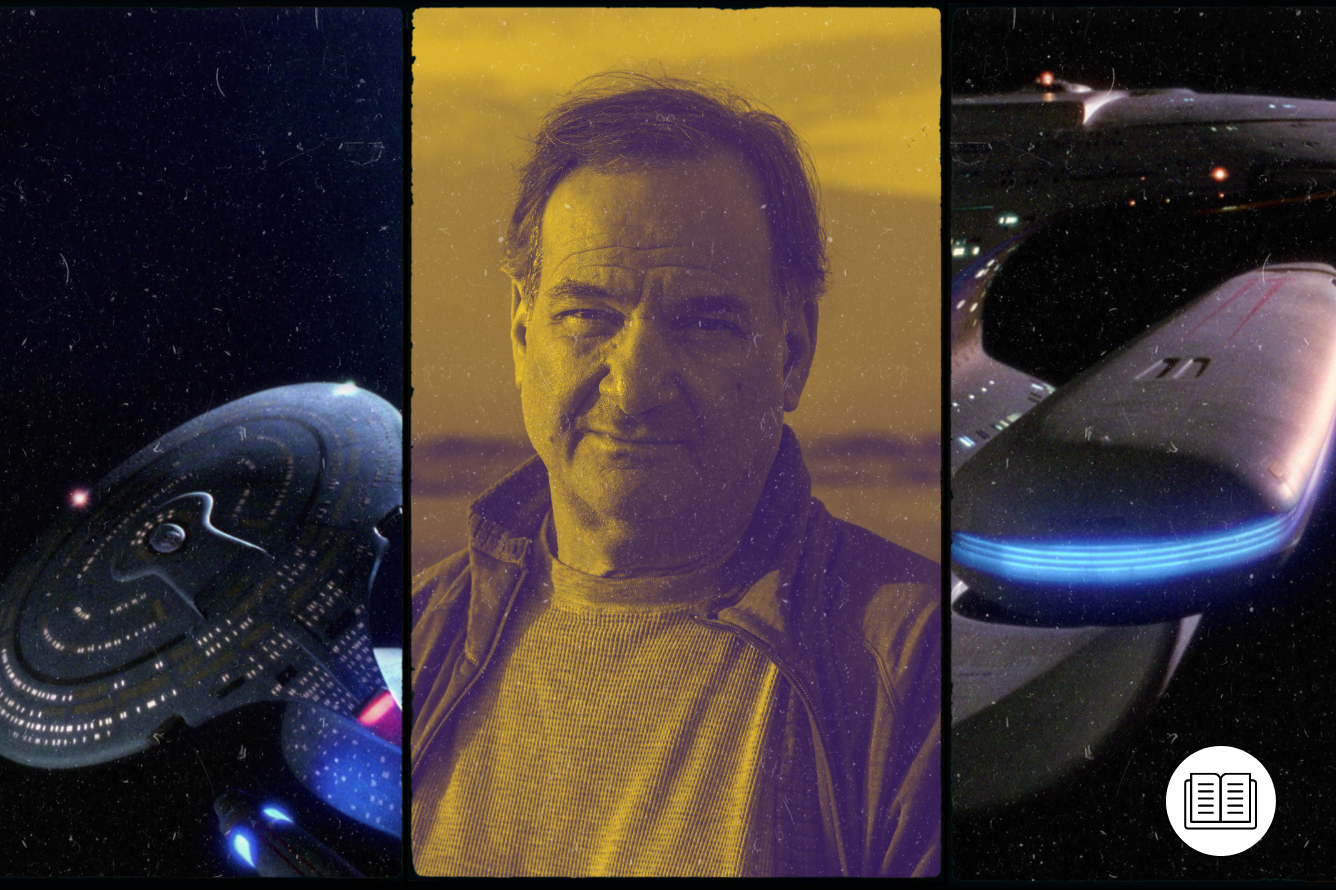
Designing Moya and the Peacekeeper Prowler
This approach to writing the rules as quickly as they broke them applied to what you saw on screen. Butterworth recalls an early meeting with Brian Henson where he describes the good guys flying in screen left and the bad guys flying in screen right in the time-honored tradition of Star Trek: The Next Generation.
“The spacecraft always had to come from left and right,” Butterworth observes. “It was like classics of the American Western thing that the good guys always had to come in from screen left and go this way. And then the bad guys always had to come from screen right and come in that way. And that's how they work, you know, and I had to go ‘Nah, we're not going to do that – this is space, we can come from any angle.’
“So we just started playing with the space somewhat. And every time we went to a new [area of] space, well space is so colorful – why don’t we make it red over there and blue over there? So we were mucking around with lighting and with ships. I just totally ignored trying to make spacecraft look like spacecraft. Sometimes it’d be like a French gate that I found and went, ‘Okay, let’s model that and turn it into a spacecraft’ or ‘This one looks cool, it's like a hairdryer upside down, let's paint a different color and fly that.’ So it was a it was a pure art form in a way.”
The “French gate” is the Illanic shuttle being devoured by its own black hole in ‘Back and Back and Back to the Future’ (S1, Ep5), but the upside-down hairdryer is anyone’s guess.
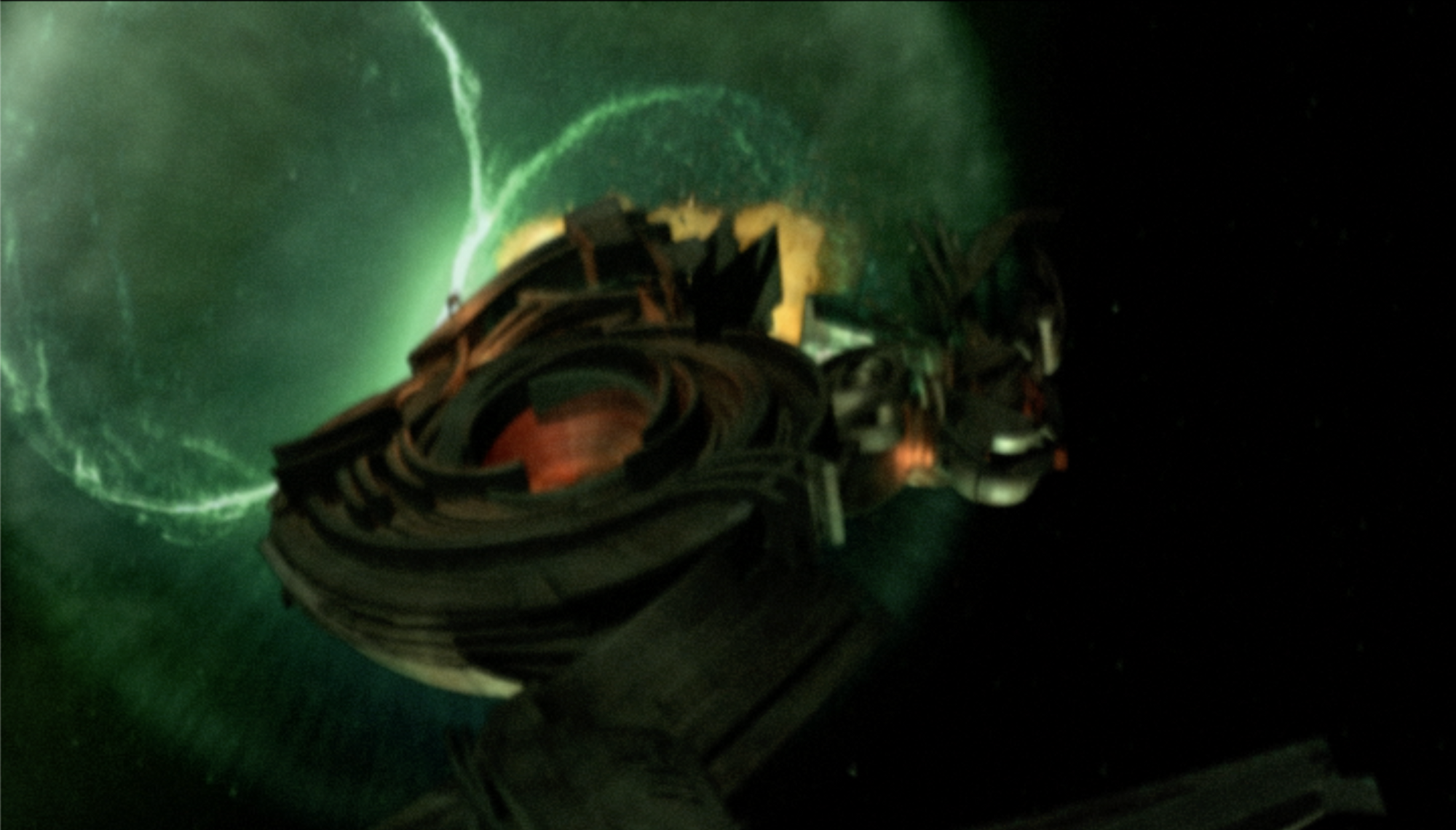
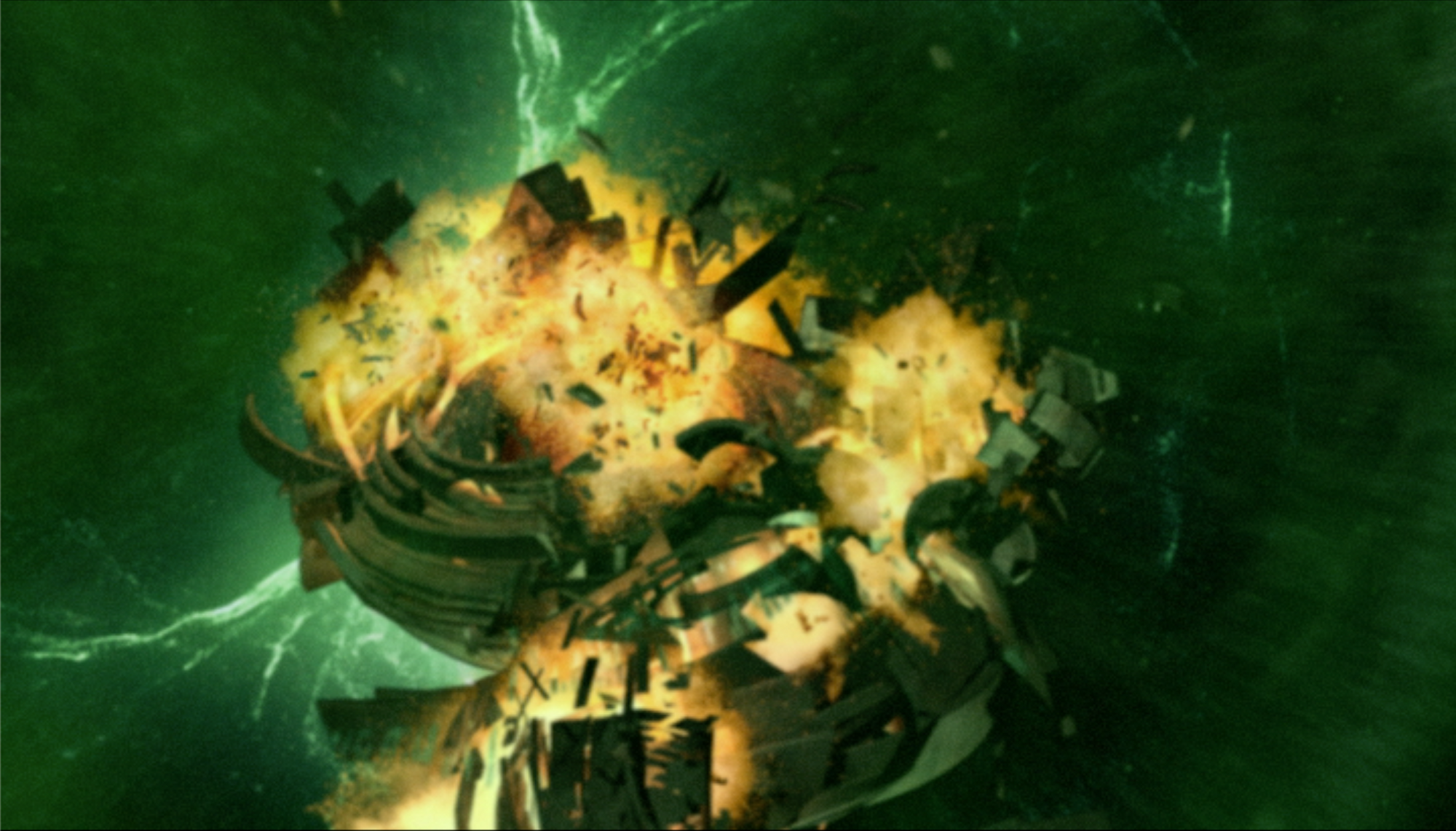
At this early stage in the show’s development, Butterworth was working very closely on the design of the series’ recurring vessels. It wasn’t a linear process where he was handed a piece of concept art to execute, he was part of a creative collaboration with production designer Ricky Eyres, and artist Kevin Hunter that resulted in the Peacekeeper Prowler, John Crichton’s Farscape One module, and Moya.
“The Peacekeeper [Command Carrier], that came through as a model,” he recalls. “Even from our first meetings, they had something, but Moya they had no idea about and the Prowler we had no idea about it as well. So when the Prowler came along, it was originally we sort of talked about it being like a hand that opened up each of the fingers were like blades. I think Ricky and Kevin were working on this idea that was kind of like a heavy Russian fighter plane of some sort. So we sort of adapted all of these ideas that the wings of the Prowler could open out and these become blades, and Kevin did a whole bunch of kind of drawing [that] we then interpreted the Prowler ship from.
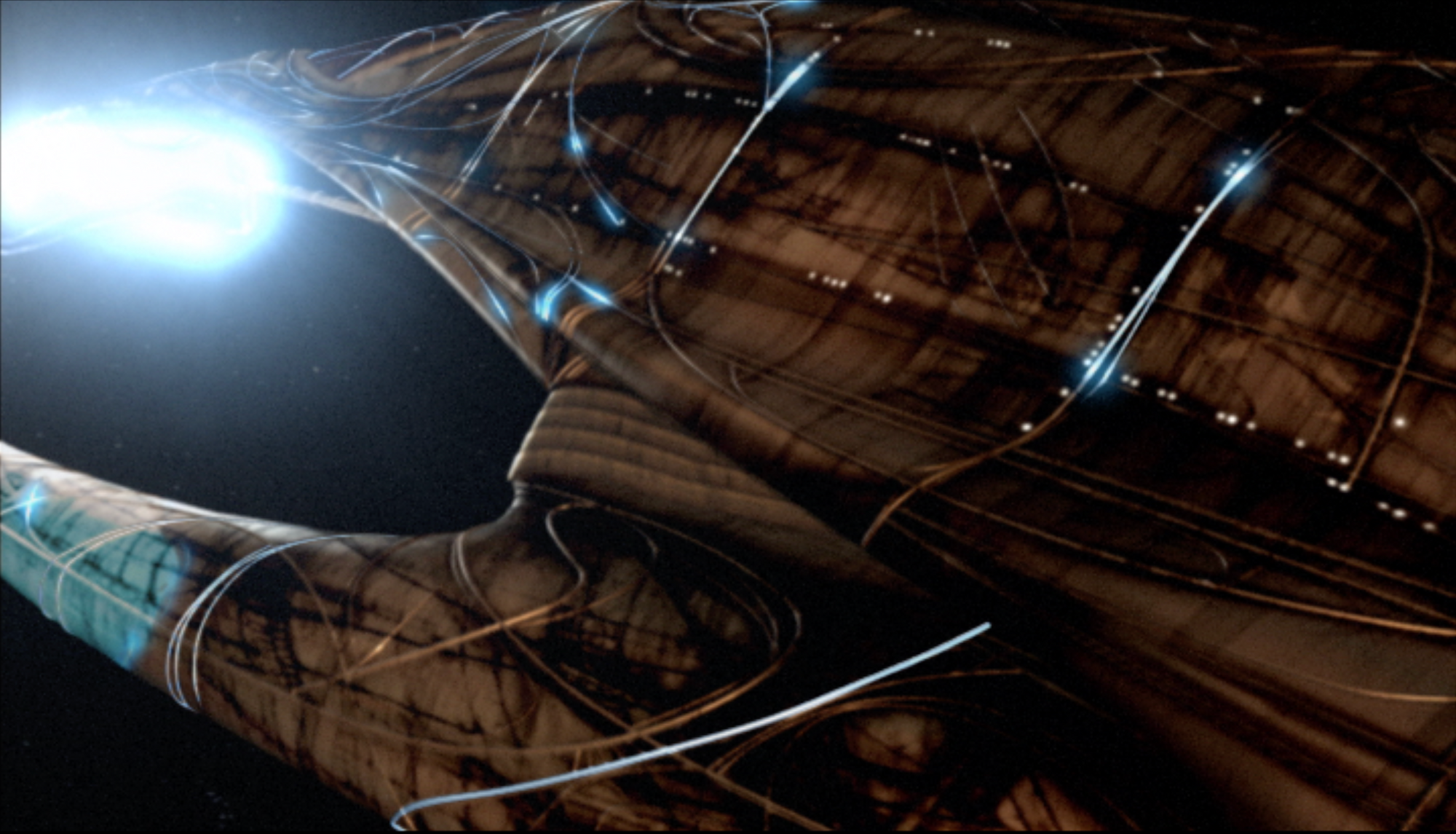
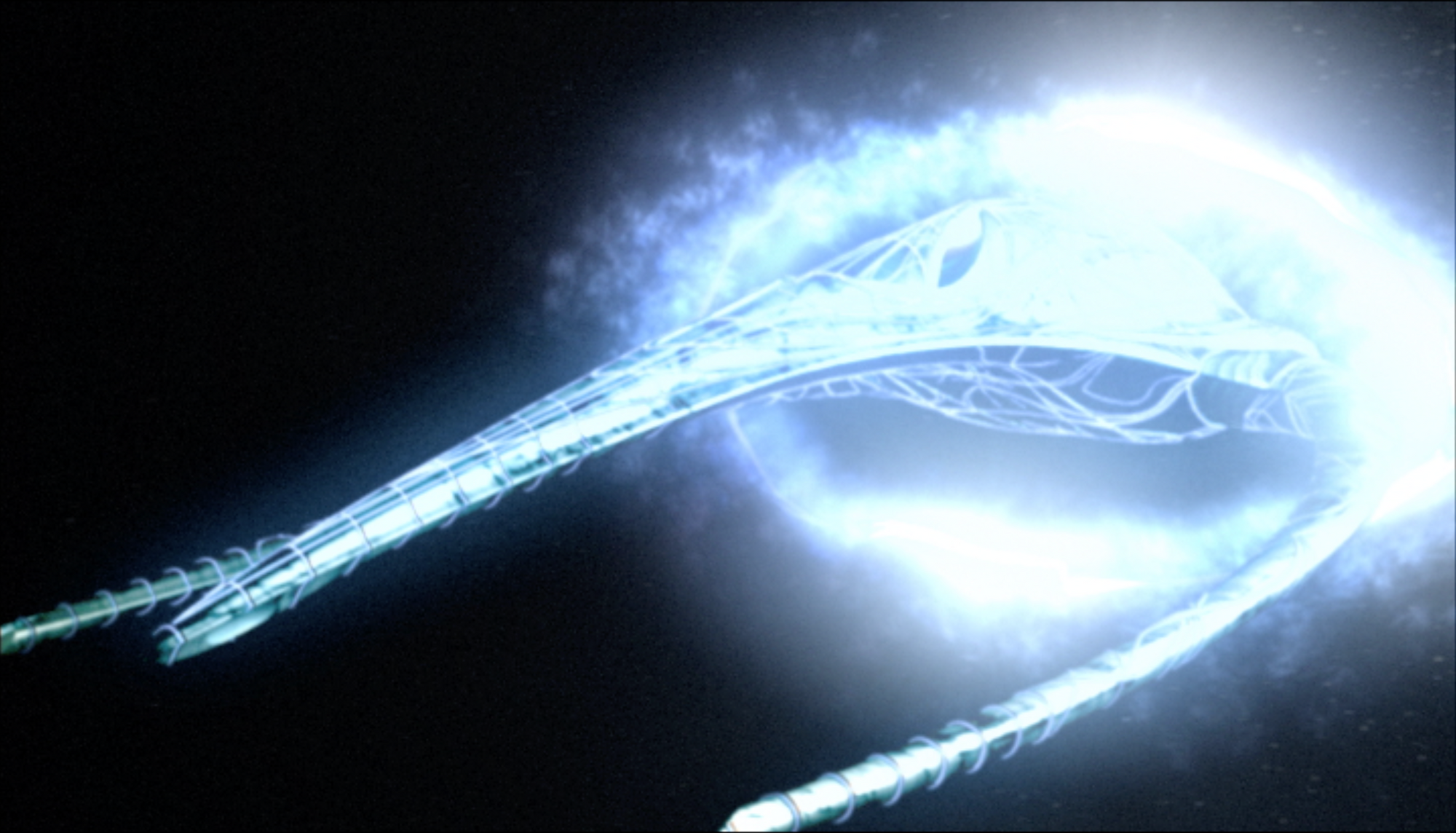
“Moya we had a rough shape for. I designed all the skin, I wanted to make it so had like astral patterns on it. So all the circles and lines were all stuff that was based on nuclear fusion maps and universal patterns and stuff. So we've kind of hidden in all kinds of things. I think my kids’ birthdays are hidden on the actual maps of Moya. Then Ben Browder’s ship, the module, was just inspired by a NASA module. So we designed and modeled that coming out of the Space Shuttle and being launched. There was quite a lot of creative freedom, in every episode when a new kind of character came along with their vehicles.
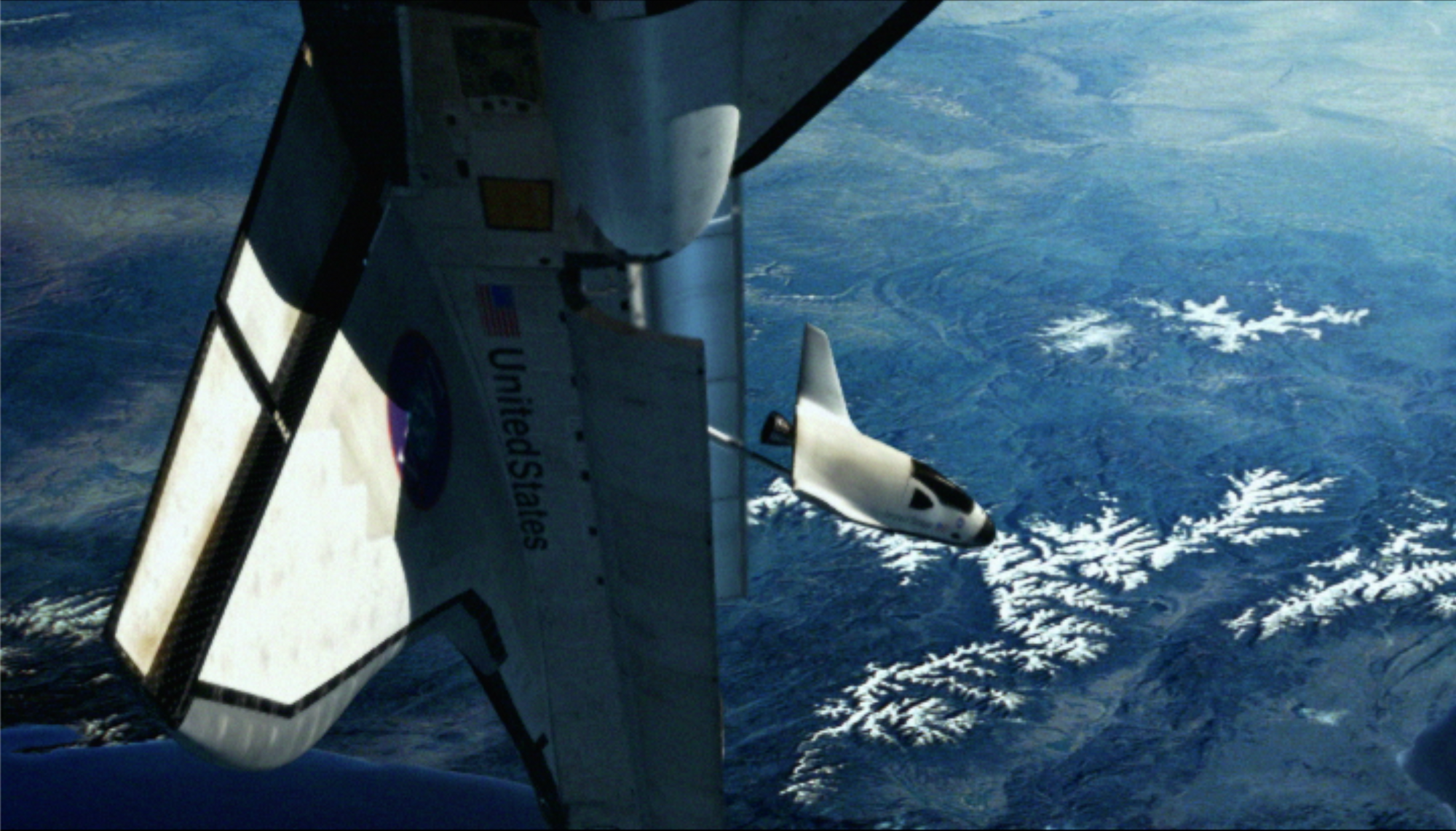
“You find with a lot of shows that everything feels the same. One of my arguments was if you're gonna do spacecraft, and worlds, surely, it’s gonna be like our world now. It’s so different to be in Asia than it is in France. The cars look different, the packaging looks different, so surely, we had to approach that in the same way. It can't be a single design language, but it has to be inspired very differently. I’ve always used the idea when designing things that as you turned a design magazine, every page had to be brand new, it couldn’t feel the same.”
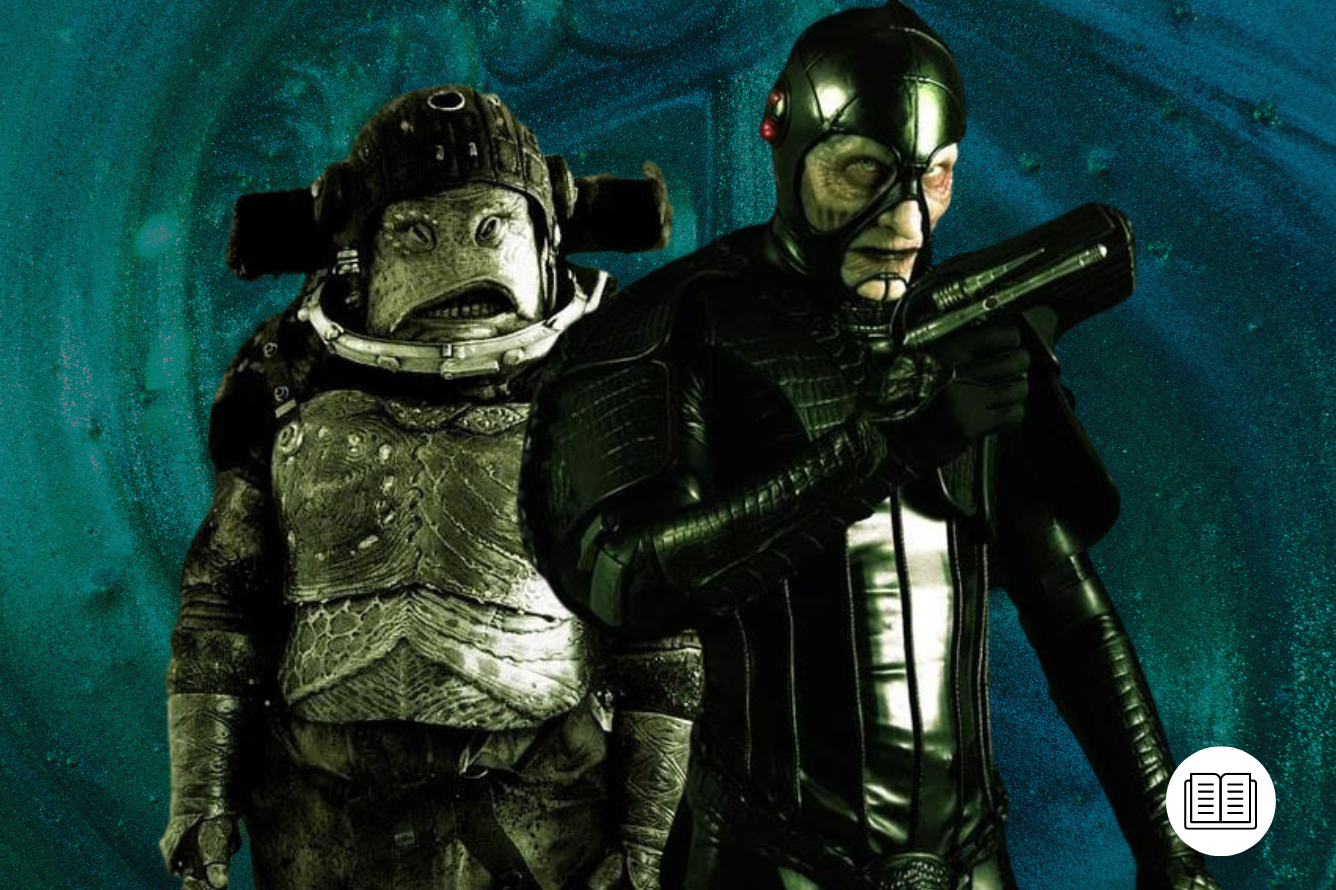
Farscape’s Creative Process
Garner MacLennan Design remained deeply involved from episode to episode. The collaborative atmosphere Butterworth experienced during the show’s birth, continued throughout the first season as the VFX team had a voice both in the writers’ room and on set.
“We would have a rough outline of what we were doing when a week out from when we're shooting,” says Butterworth. “We would essentially sort of sit there with the writers and the writing team and go ‘Okay, well, here's the thread of the story, here’s what’s going to happen [so] what are the assets that we’re making?’ Then obviously the directors pretty much get the show literally a couple of days beforehand, and then they pretty much turn up on set and start shooting. It was crazy theater, thinking back I think every episode was seven to nine days and that was it.”
“This is from Pete Coogan, he was the [executive in charge of production] at Hensons, and Matt Carroll, who was the producer on the show locally. They said, ‘Look, we’re gonna get these guys in really early to talk with the writers and talk with the directors. So at least we can kind of steer the boat before it goes off the rails and down the cliff.’
“The most influence I’ve ever had on a show was probably on Farscape. We would have huge chats about how space was folded, or, how does Moya give birth to a child, and everything had to be brand new. They wanted to see things they hadn’t seen before, so we couldn’t do a wormhole that was normal, it had to be something different. I think we were inspired by cresting waves at the time and trying to simulate that.
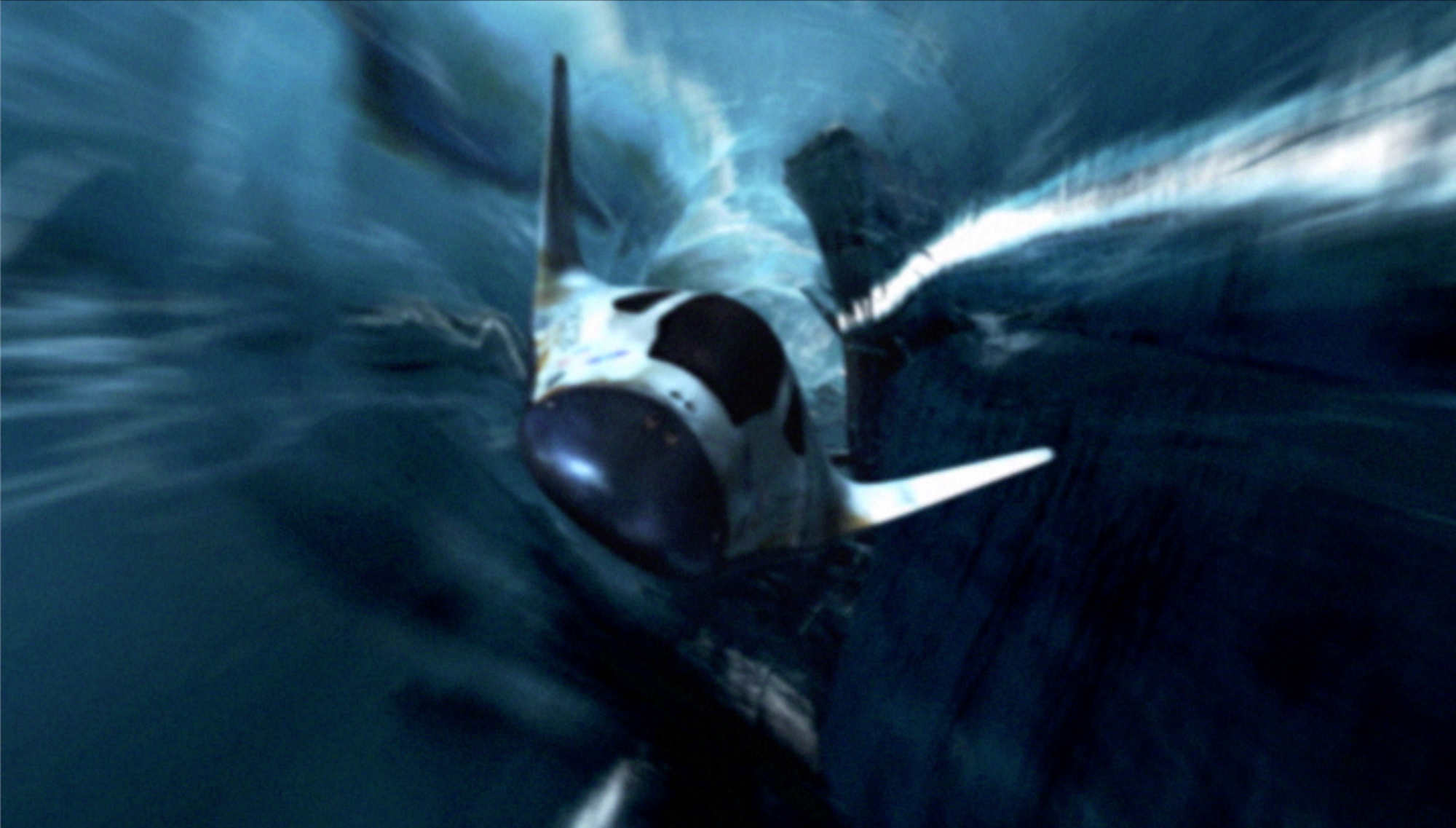
“A lot of the time in VFX, things have already been conceptualized, and the story is already written. But it was very embryonic, I was right there in amongst it, and everyone was throwing in ideas, and the best ideas stuck. It was kind of crazy. It’s probably the most stressed I’ve ever been in my life.
“I would easily say most days were 16 hours. There were really long days. I think we were breaking down scripts and talking to writers on the first episode, and I’d have eight episodes in play – all kind of staggered like a flight pattern. Then obviously, episode eight was the one that will be going out the door.”
The number of CG shots per episode was controlled with a ‘credit’ system.
“[The directors] had a certain amount of tokens per episode that they could have, but we were shooting two episodes at a go each time. So they could kind of trade tokens, so it’s like ‘Okay, this is a grade one kind of shot here.’ So that's an expensive shot, and you get X amount of those per series and then gunfire is pretty easy. So you know, you can throw in loads of those.”
At the heart of Farscape’s special sauce, is of course the mixture of practical effects and CGI – arguably truer to the spirit of the original Star Wars than Star Wars was at that point. Puppetry was the big one, obviously, but digital matt paintings were as large a part of the VFX process as computer-generated imagery. Butterworth remembers coming out of Star Wars: Episode I – The Phantom Menace (1999) and thinking, “Well, that wasn’t very good” but being driven to try and replicate it “with our tiny budget.”
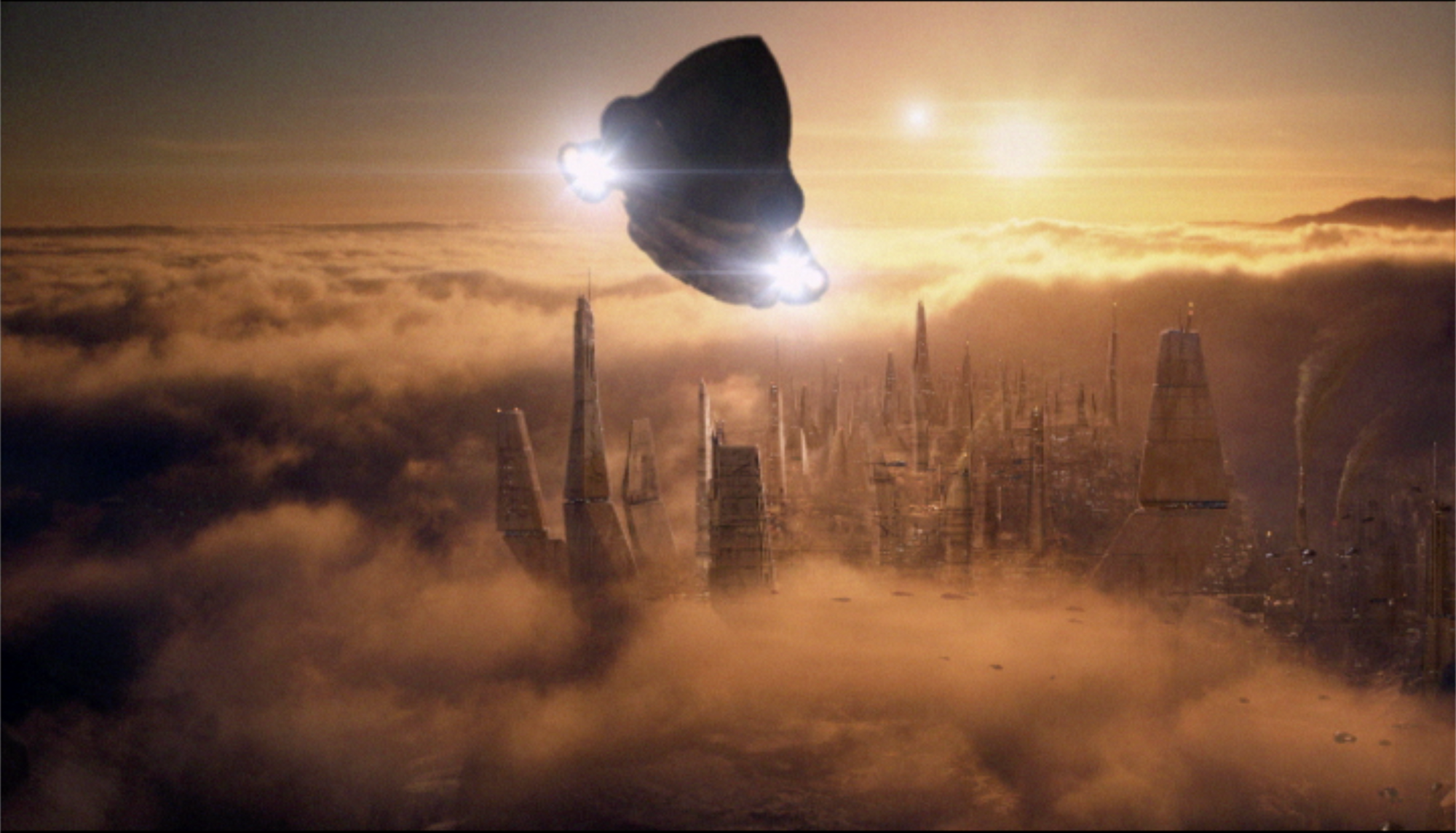
Rather than create a truly 3D structure, for example, Butterworth or one of his colleagues would create the textures in Photoshop and ‘project’ them onto a 3D model, or use them to extend an interior like Pilot’s Den.
“We wanted to do photogrammetry, we made little miniature models and photograph them, we did all kinds of crap, then all the things you couldn't do on a commercial, but suddenly, you know, we were all fans of being an all grown up with Star Wars, we wanted to do that and put our spin on it, you know,
“We couldn't afford to model or make everything in 3D. So we had to use textures and photography and clever illustration to try and give it a sense of scale, and that was our big job really, to make these environments bigger than they were – than they can afford. And some of the main sets were pretty huge, but we took them to the next level.”
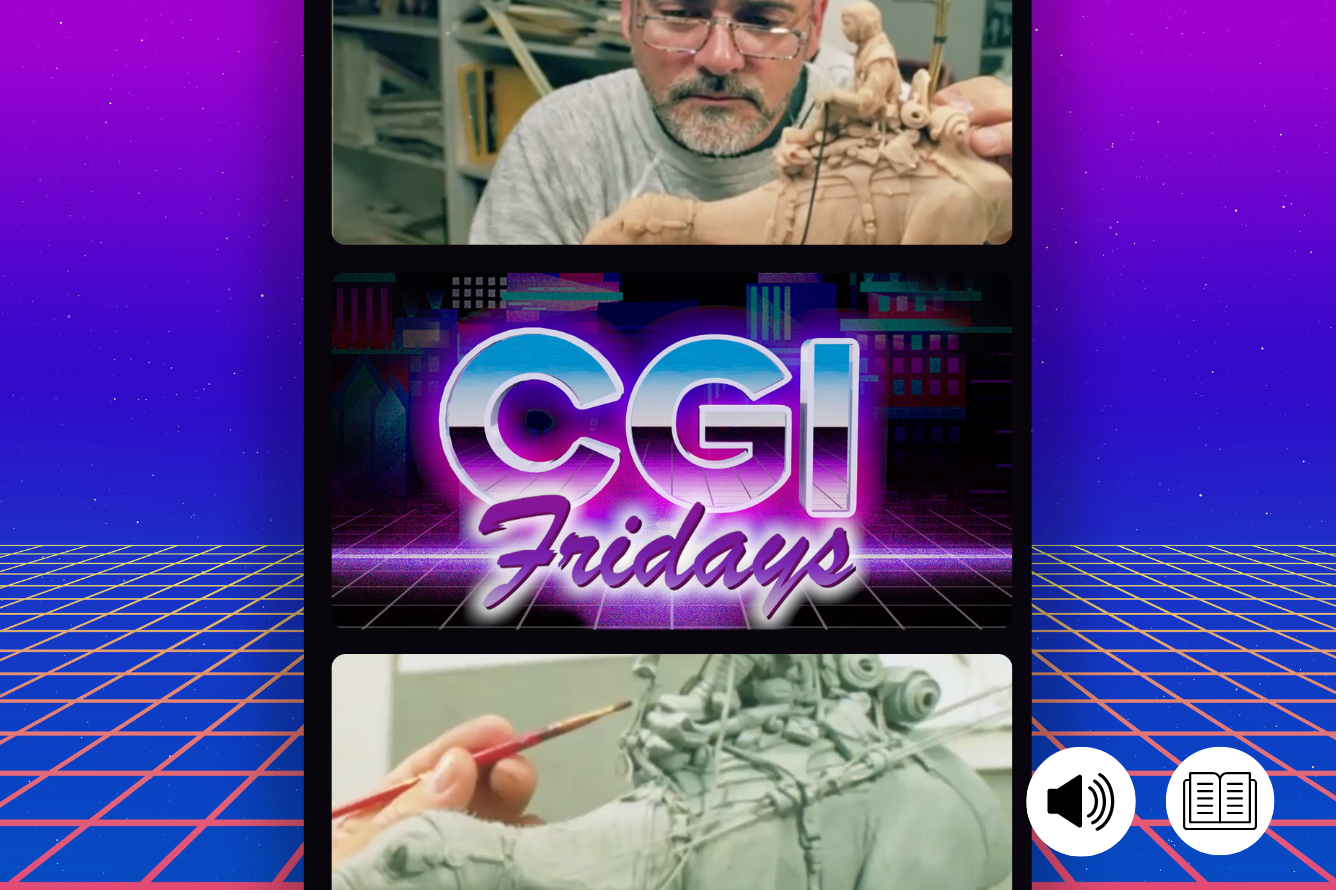
The Legacy of Farscape’s VFX
Unfortunately, Garner MacLennan’s days were numbered and the second season of Farscape was contracted to Animal Logic. Creative disagreements between the various stakeholders in the US and Australia had come to a head, and Matt Carroll left somewhat acrimoniously.
The reason given at the time for Garner MacLennan giving way to Animal Logic was all the extra work done by the company, which the production was unable to remunerate. Executive producer David Kemper told Cinefantastique (April 2001), “Garner MacLennan had of their own volition, put more into the show then they were required to. They were fantastic. It became very cost-inefficient and we couldn’t make all that up.”
That certainly tracks with Butterworth’s account, but he suggests the decision may also have been a parting shot by the aggrieved Carroll.
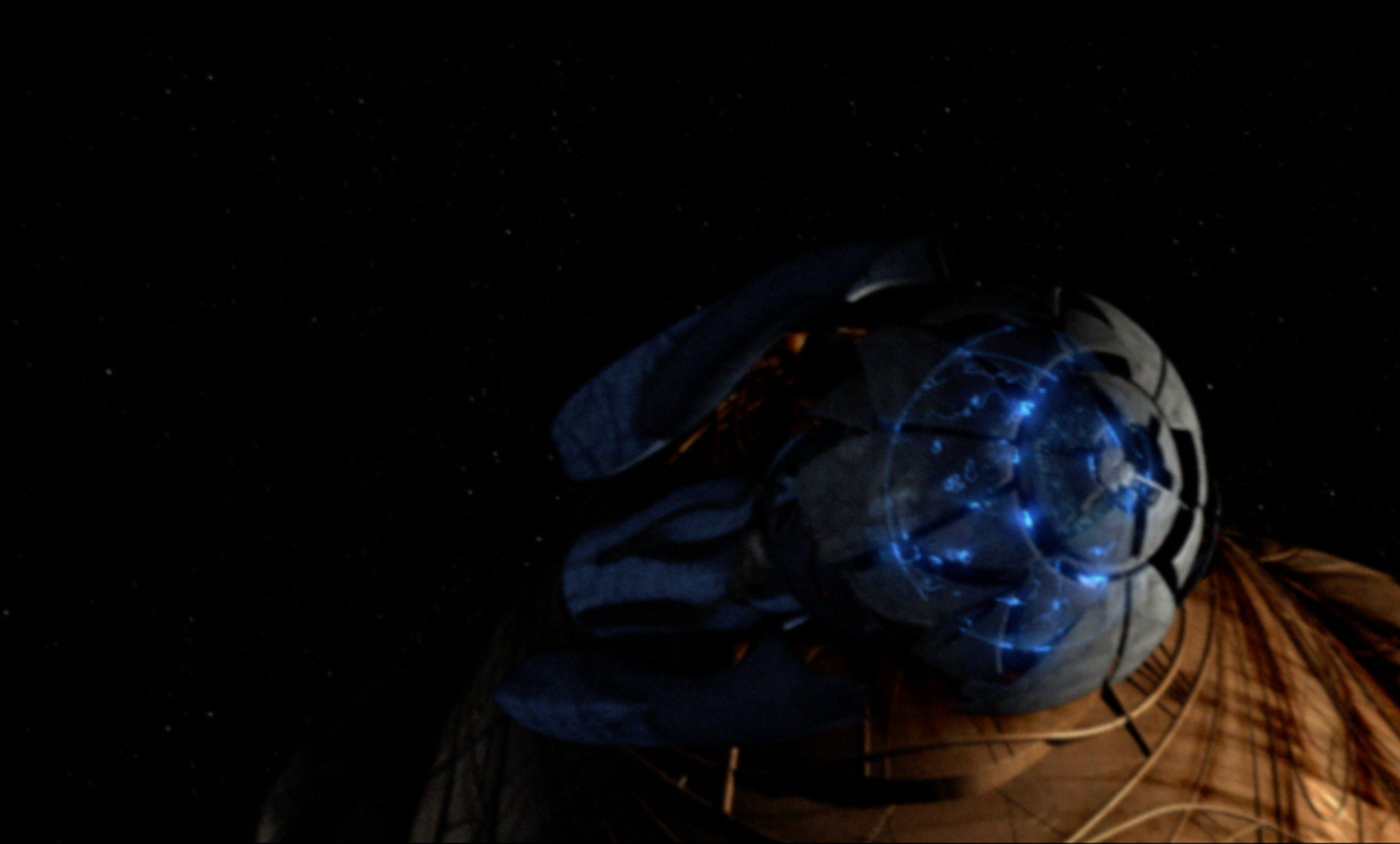
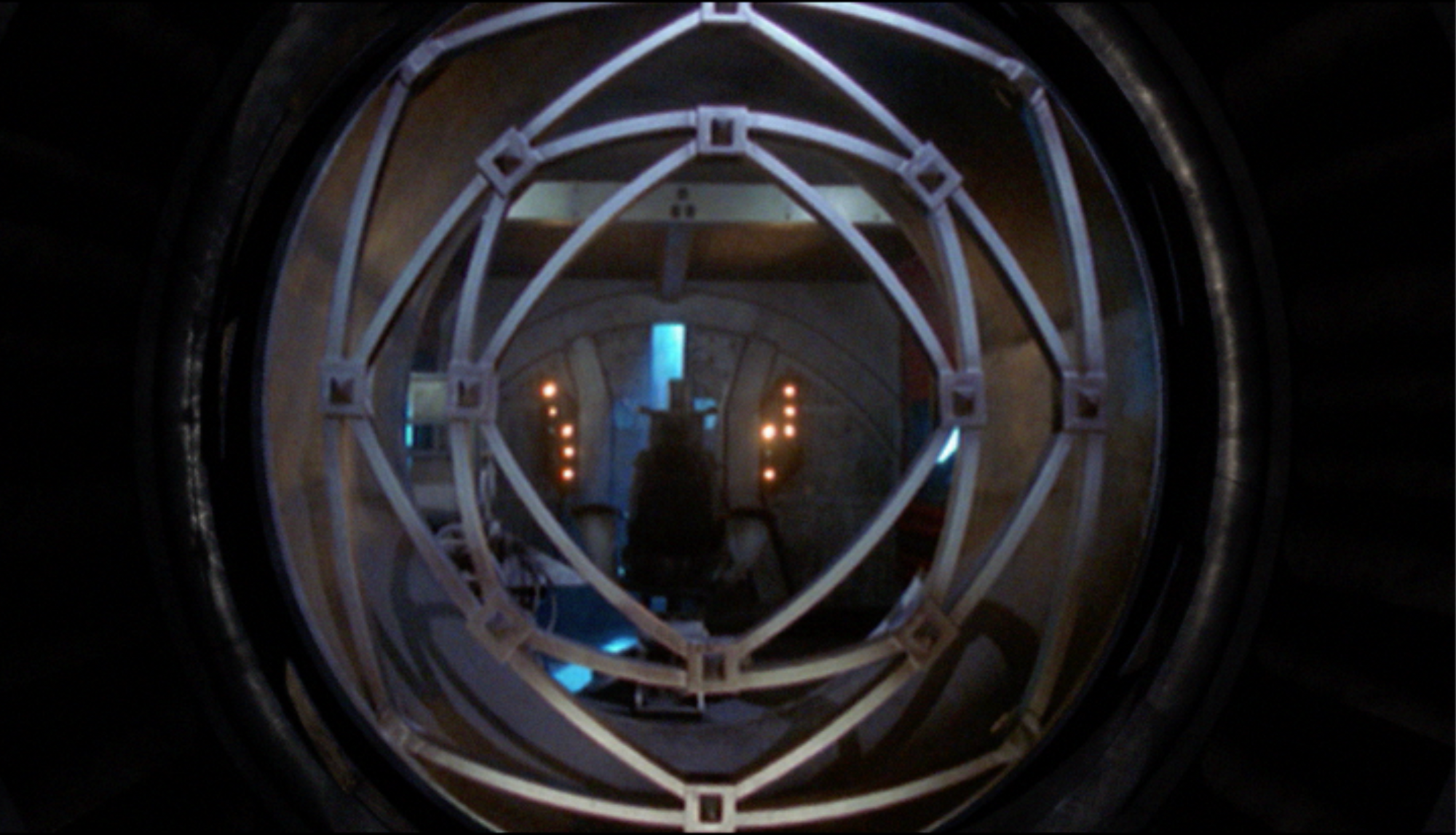
“I think Matt was going to be let go by Hensons, so because he knew the power of how good the VFX work was, he signed the second series over to the rival of Garner MacLennan Design. And that was it – they kind of destroyed the team that did the first series. Everything was handed over. And I was already out the door, moving on.
“As a company, we were good to go and do a second series, but it was a political card playing done at a level that was way higher than us.”
Garner MacLennan Design wasn’t long for the world. They were renamed GMD in 2000, and then RobotDNA in 2004, and doesn’t seem to have handled a project on the scale of Farscape since the 2002 movie Rabbit-Proof Fence. For Butterworth, it was the start of bigger things. He founded Fuel VFX in 2000 with Jason Bath, Andrew Hellen, Simon Maddison, and Dave Morley – all of whom worked together on Farscape. (Ironically, Fuel was acquired by Animal Logic in 2012).
“When we finished the show, a whole bunch of us decided to start a company. We ran Fuel for like 12 years, based on the back of kind of the craziness of Farscape.
“All the stuff that we did we’ve used time and time again on Marvel shows and in Prometheus, we did all holographic stuff and the star chamber, the orrery, was all kind of inspired by early stuff they did on Farscape – just taken to the next level. All the Marvel holograms that we made for Iron Man and Age of Ultron [too].”
Then, of course, there’s the undeniable influence of Farscape on James Gunn’s Guardians of the Galaxy movies. Not just in the irreverent and anarchic tone, blue makeup, leathers, and literal presence of Ben Browder, but in the iridescent nebulae and the weird spaceships.
“[James Gunn] mentioned that he was a massive fan of Farscape you know, and when you look at his show, both of his films are so brightly 70s colors, because he was inspired by Peter Elson and Chris Foss, and all of these designers at the time, which I was using as inspiration, sort of the foundations for what we were doing on Farscape. I looked at all the 70s British illustrators that were doing sci-fi and went ‘Sure, we can make a spacecraft look like a cow and make it like metal paneled and throw aerials on it in and put it on a lime green background in space.’
“We were making Nissan commercials and selling bread, and refrigerators and stuff. So, for us to suddenly be making spacecraft is really fucking cool.”
There’s just something about Farscape that Butterworth keeps coming back to. Perhaps like all great works of art, it’s never finished – merely put down.
“It’s been such a long time,” he muses. “I'd love to go back into this area and muck around again. Funnily enough, about six years ago, I was trying to get the rights to Consider Phlebas, the Iain Banks book. I always wanted to make gridfire. It’s just one of those effects that wanted to do and build some of those planets, if anyone ever does that I'd love to work on it.”
The cost of your membership has allowed us to mentor new writers and allowed us to reflect the diversity of voices within fandom. None of this is possible without you. Thank you. 🙂


